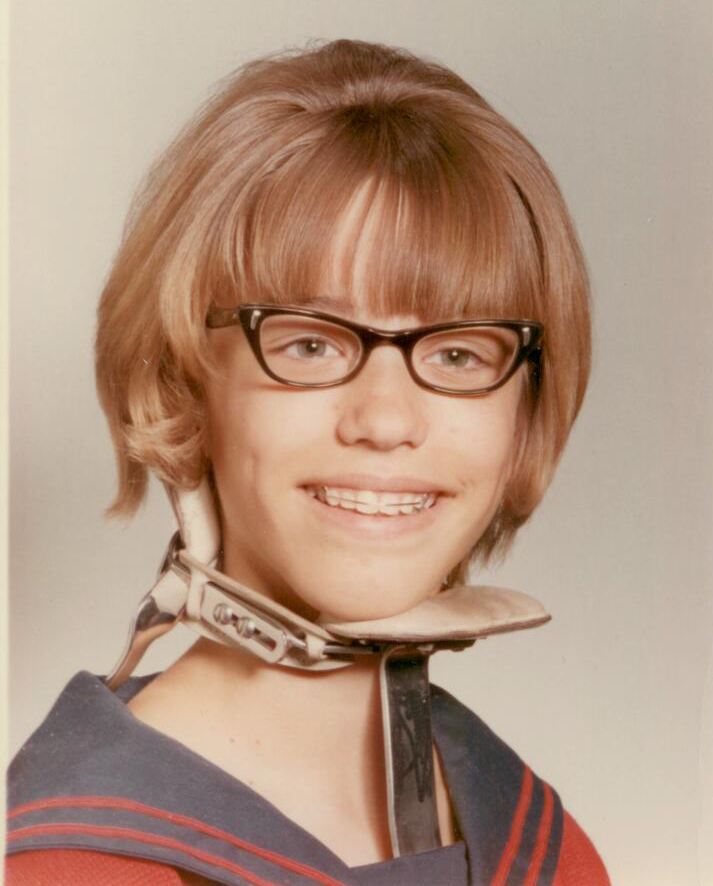Although many days I wish I didn't, I remember quite clearly what it was like to be in junior high:
- looking fine when I checked the mirror in the morning, only to discover at lunch that a zit the size of an eyeball had sprouted on my chin
- wearing baggy sweaters because some of my newly-grown body parts were attracting too much of the wrong attention during the walk to my locker
- doubling over in gym class because certain internal organs had just activated themselves in the most painful way possible
Then I imagine what junior high must have been like for my mom, who went through all of that while wearing a Milwaukee brace for scoliosis, and I suddenly feel much less sorry for myself.

- My mom at age 13
My mom had adolescent idiopathic scoliosis (AIS), a condition in which the spine curves sideways in a C or an S-shape, sometimes causing the patient's ribs, hips or shoulders to appear unbalanced. AIS affects 2-4% of teens, most often girls, and develops during the growth spurt between ages 10-14. It's called "idiopathic" because, despite intensive research, no one knows for sure what causes it: it seems to be the result of complex genetic and developmental factors that are still being identified, and it's possible that different patients develop similar curves, but for different reasons.
Although AIS itself is mysterious, there is now definitive evidence that bracing - a treatment in which patients wear custom-built body braces with pads that hold the spine in place - prevents the curve from progressing to the point that it dangerously compresses the heart, lungs, or other organs. Despite the fact that a form of bracing has been used as therapy for scoliosis for 2000 years, previous studies on its efficacy gave mixed results.
This was because researchers had no way to be sure whether patients were wearing their braces, or how much. Many teens who claimed they wore their braces the recommended 22 hours per day had bad results - was this because bracing didn't work or because the teens took their braces off when no one was around to catch them?
Then came the BrAIST study, in which patients at 25 hospitals in the USA and Canada were given a choice of treatments: nothing, or full time wear of a Boston brace (a model that, although known to be less effective than the Milwaukee, is completely undetectable under most outfits). The twist? These braces were fitted with temperature and pressure sensors that detected when the brace was in use. There was no way to cheat.
 The results were so overwhelmingly positive that the trial finished early - bracing stops the progression of scoliosis. And for teens who may have to commit several of the most traumatic years of their lives to this treatment, that knowledge might make it all worthwhile.
The results were so overwhelmingly positive that the trial finished early - bracing stops the progression of scoliosis. And for teens who may have to commit several of the most traumatic years of their lives to this treatment, that knowledge might make it all worthwhile.
Do you have scoliosis, or know anyone that does? What was your experience of treatment like? What would you say to teens who have just been diagnosed with the condition?
---
More information for patients with scoliosis is available in my book, Living With Scoliosis, which I wrote in memory of my mom.
